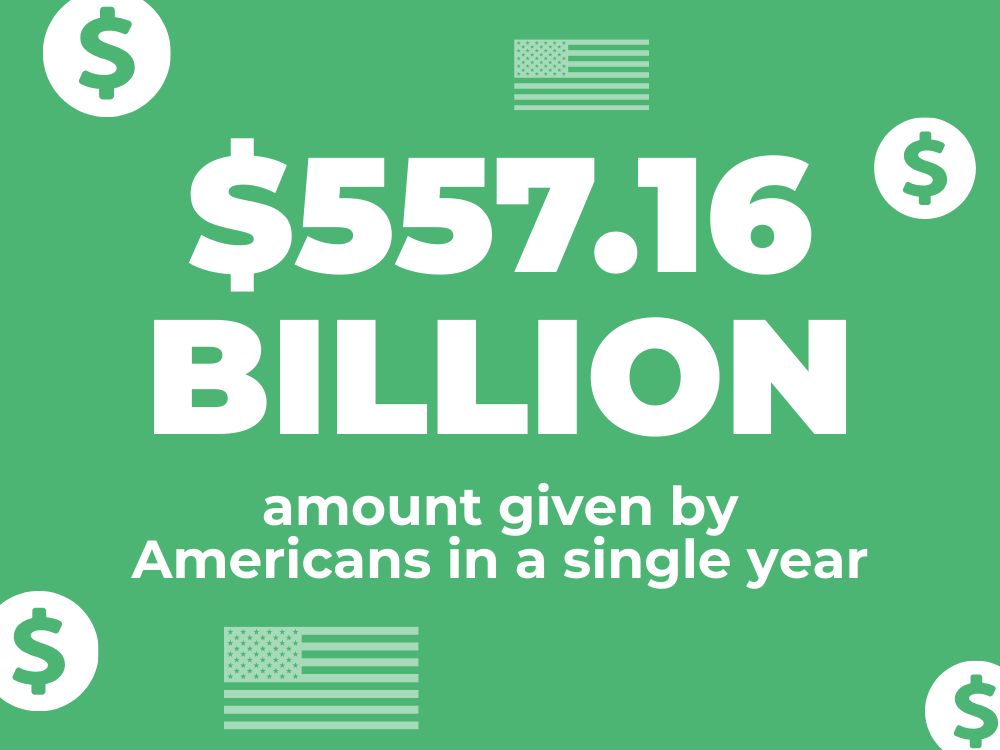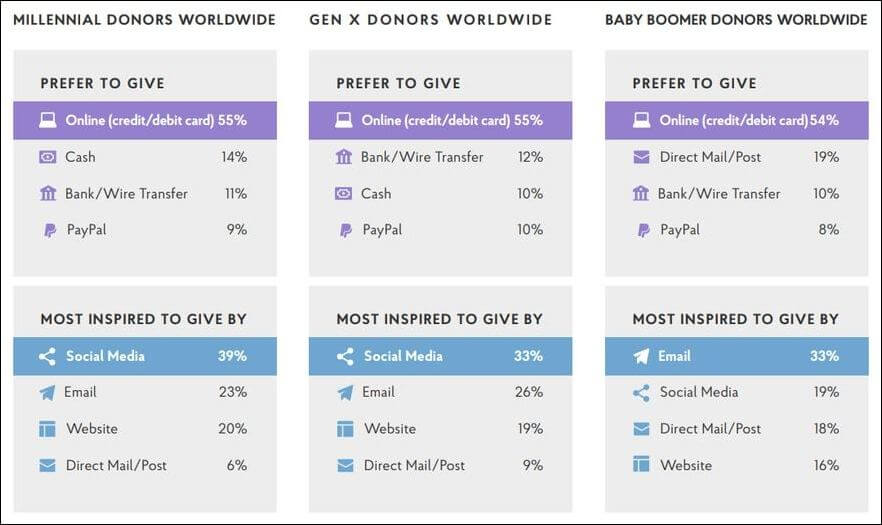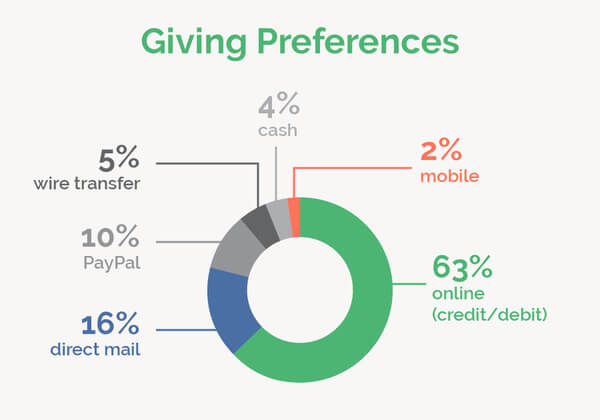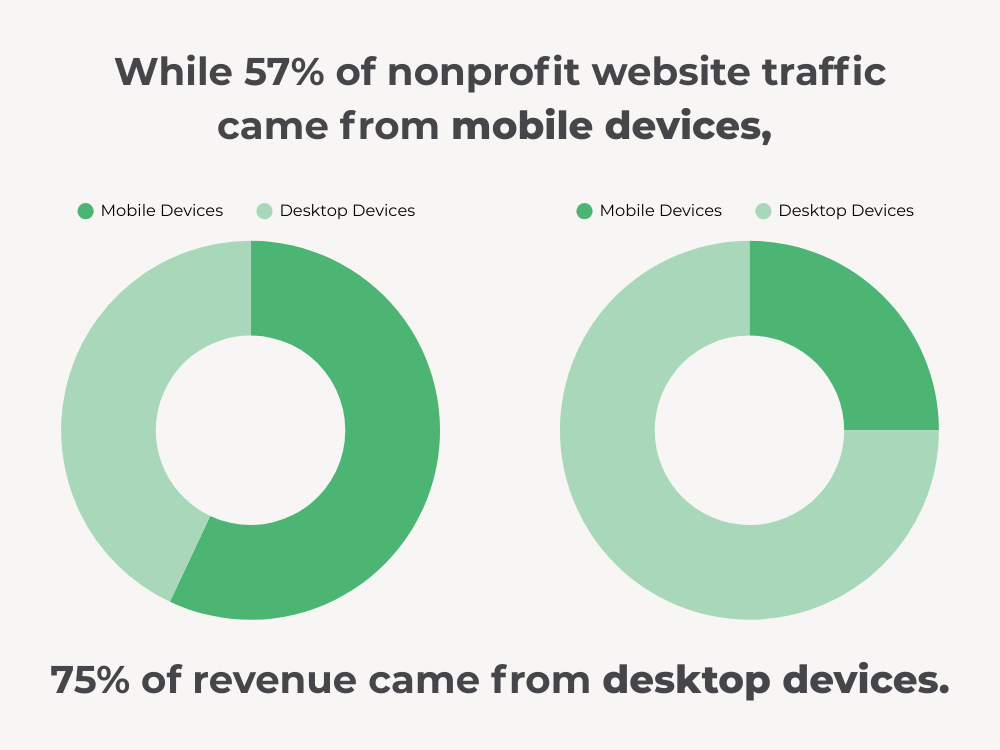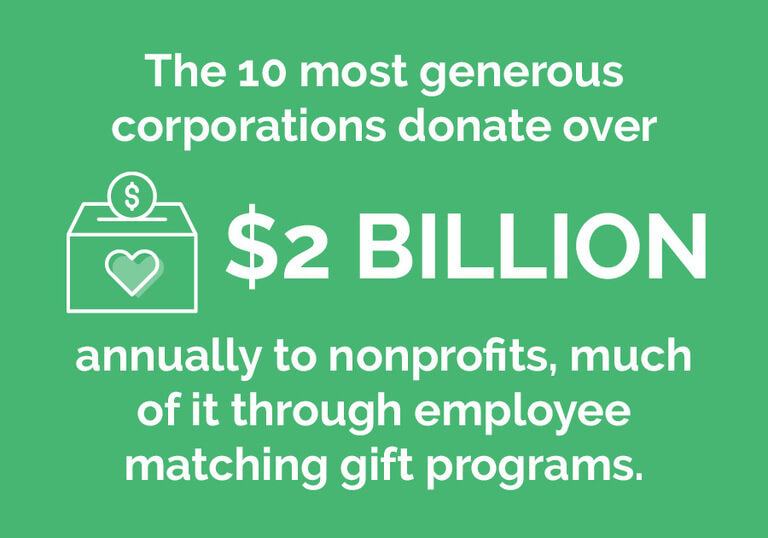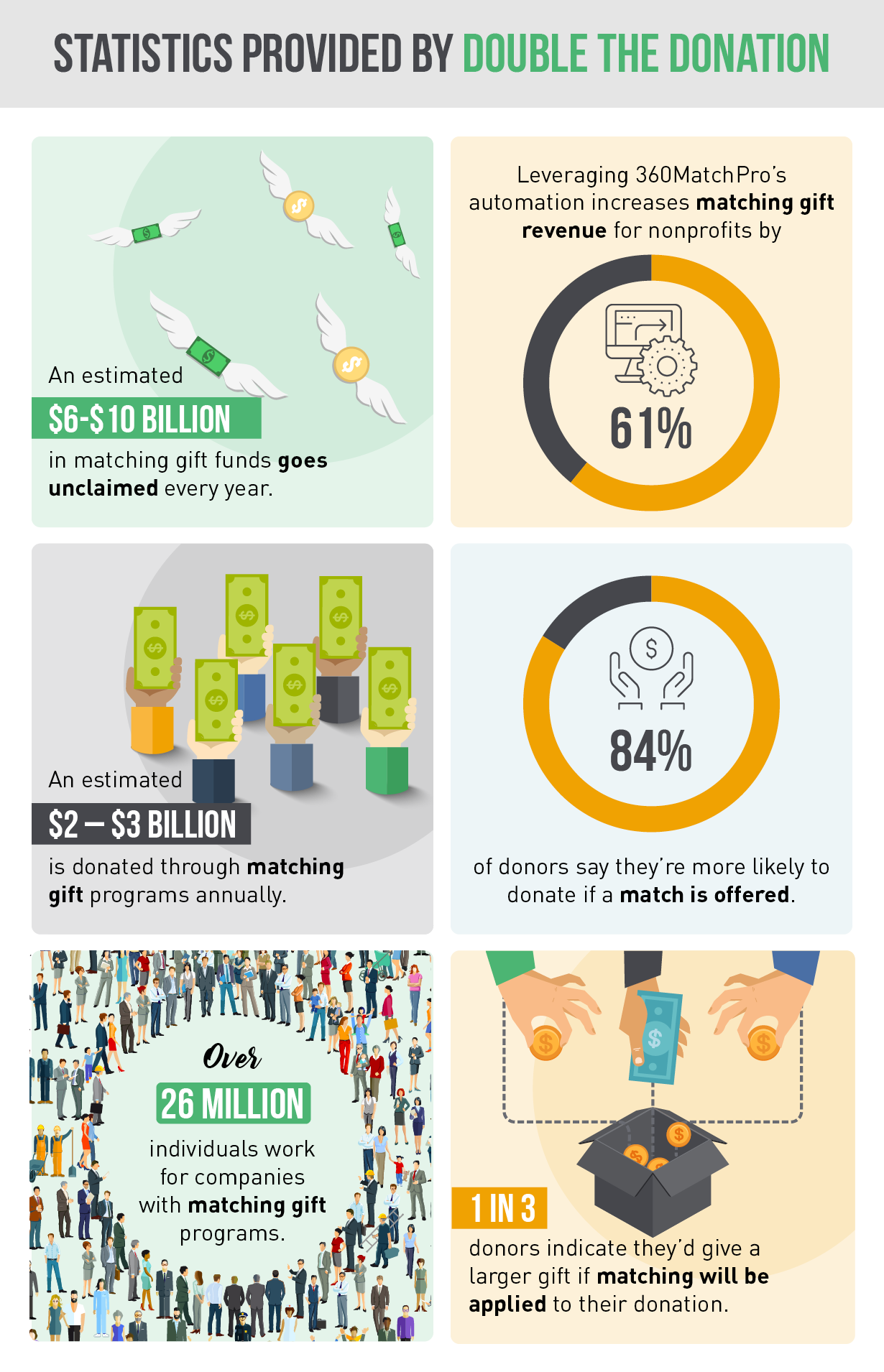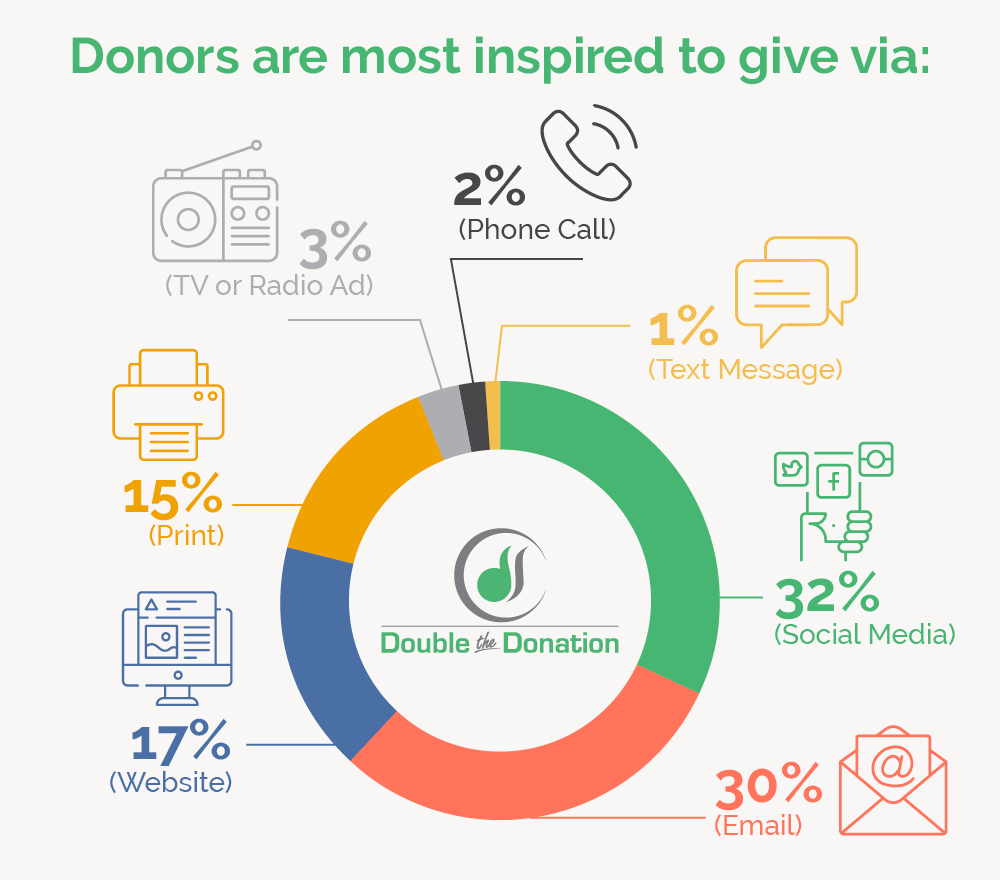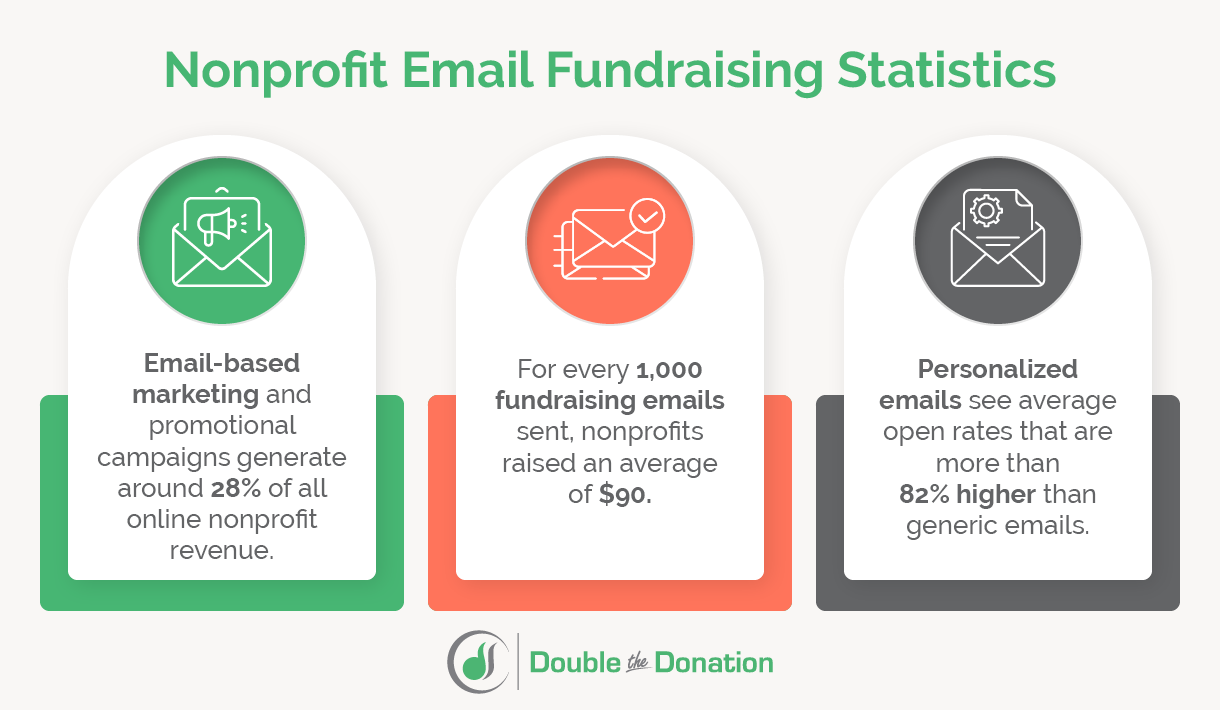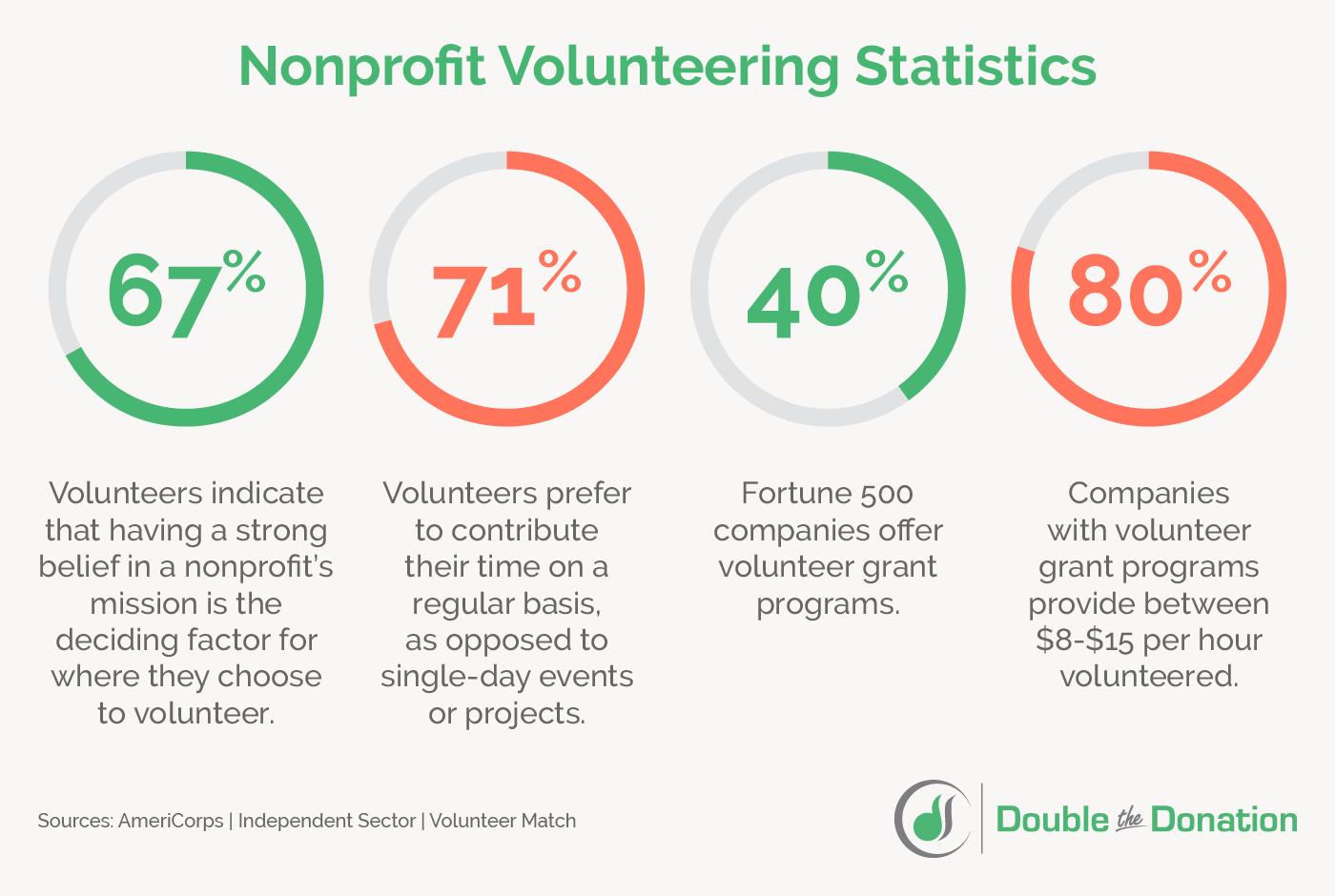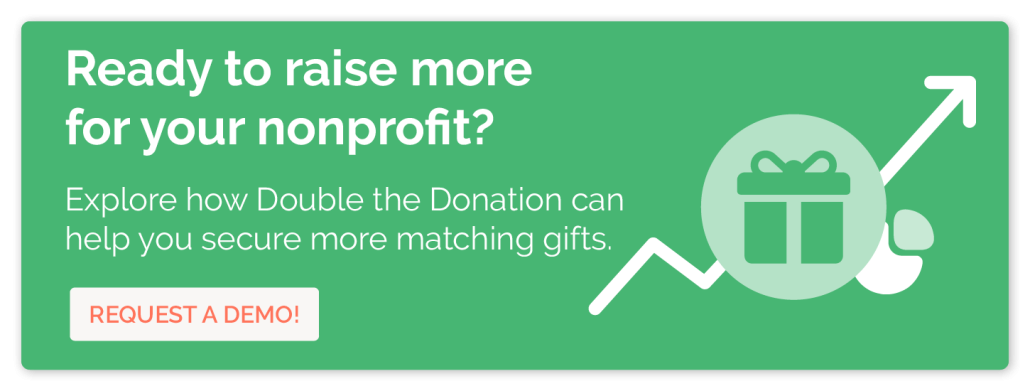Nonprofit Fundraising Statistics to Boost Results in 2025
Fundraising Statistics: Charitable Donations
Key Fundraising Statistics:
- In 2023, Americans gave $557.16 billion to charity.
- The largest source of giving came from individuals, who contributed $374.40 billion, representing 67% of total giving.
- 18.6% of total nonprofit giving came from foundations, for an estimated total of $103.53 billion.
- The majority of charitable dollars went to the following sectors: religion (27%), human services (14%), education (13%), grantmaking foundations (11%), and health (10%).
- Six of nine nonprofit subsectors continue to exceed pre-pandemic giving levels, even when adjusted for high levels of inflation.
- 57% of donors are enrolled in a recurring giving program, up from 46% the previous year.
- The average one-time gift jumped to $121, up from $115 the previous year. The average monthly gift was $25, up from $24.
- More than 9% of total donors participate in a workplace giving program (such as matching gifts and/or payroll donations).
- 17-33% of all annual giving happens in December.
Demographic Fundraising Statistics:
- The average donor in the United States is 64 years old and makes two charitable gifts a year.
- 33% of donors give to organizations located outside of their country of residence.
- 67% of US and Canadian donors are female, while 32% are male, and 1% identify as non-binary.
- Female donors are more likely to make a donation because of social media marketing, while male donors are more likely to give because of email messages.
- 85% of US donors volunteer, and 81% attend nonprofit fundraising events.
- 81% of donors contribute food or other goods to nonprofits through in-kind donations.
The Takeaway: Donation revenue and interest in philanthropy continue to grow across the board, but it’s still essential that nonprofits prepare to adapt their strategies to shifting demographic preferences. Pursuing diverse engagement methods that include events and volunteer opportunities continues to be a smart move. Boosting donor retention across both online and traditional donation methods should always be a priority.
Fundraising Statistics: Online and Mobile Donations
Online Fundraising Statistics:
- While revenue from one-time online giving decreased by 12%, revenue from monthly giving increased by 11% and accounted for 28% of all online giving.
- 94% of recurring donors prefer to give monthly, 3% weekly, 2% annually, and 1% quarterly.
- 63% of donors prefer to give online with a credit or debit card, followed by direct mail (16%), PayPal (10%), wire transfer (5%), cash (4%), digital wallet (1%), and text-to-give (1%).
- 10% of US and Canadian donors participate in peer-to-peer fundraising efforts benefiting nonprofit organizations.
- 34% of donors contribute to nonprofit crowdfunding campaigns.
- 47% of donors also support nonprofit causes through online raffles or sweepstakes, 45% purchase from an online store benefiting a nonprofit, and 24% give through online auctions.
- 38% of online donors who make a gift in one year contribute to that nonprofit again the following year.
Mobile Fundraising Statistics:
- While 57% of nonprofit website traffic came from mobile devices, 75% of revenue came from desktop devices.
- Online donation pages had an average conversion rate of 8% on mobile devices last year, but the number of transactions completed through mobile devices increased by 50%.
- The average gift by mobile users is $79, while tablet users give $96, and desktop users give $118.
The Takeaway: Online fundraising has become increasingly important to nonprofits across the board, with online donor retention now slightly easier to maintain as donors warm to monthly recurring donation options. Mobile fundraising and mobile-optimized donation pages are more crucial than ever, but securing mobile donations is generally less effective than on traditional desktop browsers. Nonprofits should devote energy specifically to developing mobile fundraising strategies.
Fundraising Statistics: Corporate Philanthropy and Matching Gifts
Corporate Philanthropy Statistics:
- In recent years, giving has increased by more than 15% for 6 out of 10 companies.
- Corporations gave more than $21.08 billion to nonprofits, an increase of 3.4% over the previous year.
- The top 10 most generous corporations donate over $2 billion annually to nonprofits, much of it through employee matching gift programs.
- 65% of companies surveyed provide employees with paid-release time volunteer programs.
- In the last three years, Russell 1000 companies offering unrestricted programs (meaning they will match gifts to any nonprofit) grew by 48%, whereas those with restricted programs (meaning they will only match gifts to specific nonprofits, such as those in higher education) decreased by 33% to 13.6%.
- Microsoft is the largest contributor of corporate philanthropy funds, with a 65% employee participation rate for annual giving campaigns.
- Only 19% of companies include more than one paragraph on their matching gift programs in easily accessible employee-facing materials, leading many eligible donors to be unaware of program guidelines and/or participation.
Matching Gift Fundraising Statistics:
- Roughly $2–$3 billion is donated through matching gift programs annually.
- However, an estimated $6–$10 billion in matching gift funds goes unclaimed every year.
- More than 26 million individuals work for companies with matching gift programs, but over 78% of this group are unaware that their company offers a matching gift program or know any program specifics.
- 84% of donors say they’re more likely to donate if a match is offered.
- Over the last three years, the percentage of Russell 1000 companies reporting that they offer employee matching gifts grew by 11.8% to 51% total (with more companies offering the programs but not yet publicly disclosing them).
- 12% of total corporate cash donations to nonprofits are made through matching gift programs.
- 1 in 3 donors say they’d give a larger gift if they knew it would be matched and doubled.
- Only 1.31% of individual contributions made to the average nonprofit are matched, despite an estimated 10% being eligible.
- 96% of employees strongly prefer for their company to match donations made directly to a nonprofit rather than only matching donations through a workplace giving software platform.
- Leveraging Double the Donation’s matching gift automation increases matching gift revenue for nonprofits by 61%.
- The addition of auto-submission functionality is projected to yield an 80% increase in matching gift revenue for organizations that use it.
Match More Gifts With Double the Donation
Get a sneak peek of the industry-leading matching gift automation solution from Double the Donation.
The Takeaway: Corporate philanthropy, specifically matching gift programs, represents a major missed opportunity for most nonprofits. Donors are more than willing to increase their support when they know it can be matched by their employers, and companies are happy to offer their employees these options to streamline philanthropic outreach. Recent workplace giving trends show the potential impact of matching gifts is significant, but low awareness is the largest hurdle. Nonprofits should prioritize promoting these programs to donors to see more results.
Ready to tap into the full potential of matching gifts? Check out our video on matching gift best practices:
Fundraising Statistics: Nonprofit Marketing and Engagement
Nonprofit Marketing Statistics:
- 32% of donors are most inspired to give via social media, followed closely by email (30%), website (17%), print (15%), TV or radio ad (3%), phone call (2%), and text message (1%).
- Of those inspired to give via social media, 56% were most impacted by Facebook posts, 21% by Instagram, 13% by Twitter, 5% by YouTube, and 4% by LinkedIn.
- 48% of donors say that regular email communications are most likely to keep them engaged and inspire repeat donations, followed by social media communication (18%), print communication (16%), handwritten notes (12%), and phone calls (6%).
- 94% of donors say that nonprofits effectively express gratitude for their donations, while 93% believe organizations keep them updated on their programs.
- For every 1,000 email addresses, the average organization has 685 Facebook fans, 208 Twitter followers, and 160 Instagram followers.
- For nonprofits, return on ad spend was highest for search ads, at $2.75 for every dollar spent. Return on ad spend for display was $0.33, $0.50 for Meta, and $0.41 for Twitter.
- Segmenting your digital campaigns produces revenue growth of up to 760% compared to non-segmented campaigns.
Email Fundraising Statistics:
- Nonprofits send an average of 60 email messages per subscriber, including 29 fundraising appeals.
- Email-based marketing and promotional campaigns generate approximately 28% of all online nonprofit revenue.
- Nonprofits send an average of three email newsletters and two donation appeals monthly.
- For every 1,000 fundraising emails sent, nonprofits raised an average of $90.
- Personalized emails see average open rates that are more than 82% higher than generic emails.
- 55% of US donors prefer to be thanked for their charitable giving via email.
The Takeaway: Digital marketing for nonprofits has its high points and challenges. Content marketing, mainly through blogging and social media posts, represents an important opportunity for organizations to engage with their communities and grow their online visibility. Email, while still an effective and central digital marketing channel, requires a more effective strategy to yield fundraising results. Carefully track your email campaigns to determine the most viable techniques that interest your donors, and avoid approaches that generate high bounce rates or no engagement at all.
Fundraising Statistics: Volunteering
- Volunteers in America contribute an estimated 4.1 billion hours of their time, with an economic value of $122.9 billion.
- The value of one volunteer hour is currently estimated to be $31.80.
- Generation X has the highest formal volunteering rate (27.2%) among all generations, while Baby Boomers have the highest informal helping rate (58.7%).
- 76% of survey respondents donate to the nonprofits they volunteer with, while 68% of survey respondents volunteer with the organizations they donate to.
- 67% of volunteers indicate that having a strong belief in a nonprofit’s mission is the deciding factor for where they choose to volunteer.
- 71% of all volunteers prefer to contribute their time on a regular basis, as opposed to single-day events or projects.
- 40% of Fortune 500 companies offer volunteer grant programs.
- 80% of companies with volunteer grant programs provide between $8-$15 per hour volunteered.
The Takeaway: Volunteers remain crucial contributors to a nonprofit’s fundraising success, with many contributing both their time and money toward causes they care about. To retain their high-value support, nonprofits must take the time to express appreciation and emphasize their impact on the community. When people choose to volunteer with an organization, they’re often invested in the nonprofit for the long run, making it all the more important to recruit and cultivate strong relationships with nonprofit volunteers.
Fundraising Statistics: Extra Resources
These are the various resources we consulted to compile these statistics, plus a few extras:
- Double the Donation: Corporate Giving and Matching Gift Statistics
- NPT Charitable Giving Statistics
- M+R Benchmark Report
- Nonprofit Communications Trends Report
- Giving USA Report on Philanthropy
- Blackbaud Trends in Giving Report
- Global Trends in Giving Report
- Volunteering and Civic Life in America
- Value of Volunteer Time
- How We Connect
- Fundraising Effectiveness Project Database
Additional Resources
Staying on top of fundraising statistics and trends is an essential part of maintaining effective nonprofit strategies year over year. Fundraising is at the heart of what you do, so make sure to keep your finger on the pulse!
For more information and ideas, continue your research with some additional resources:
Matching Gift Videos | Examples and Best Practices
Matching gifts and other corporate philanthropy funding sources represent a major opportunity for nonprofits of all sizes.
Learn how to make the most of this opportunity by creating matching gift videos that will inform donors and encourage them to check their eligibility.
How to Apply for Google Grants: A Complete Application Guide
Ready to take advantage of search ads to promote your nonprofit’s mission?
Discover how you can access $10,000 a month in free ad credits through the Google Ad Grant.
What Is an Email Append? All Your Questions Answered
Is it time to update your email fundraising strategy? With email appends, you can ensure that your supporter data is accurate and up-to-date.
Explore the benefits and best practices of email appends in this comprehensive guide.


